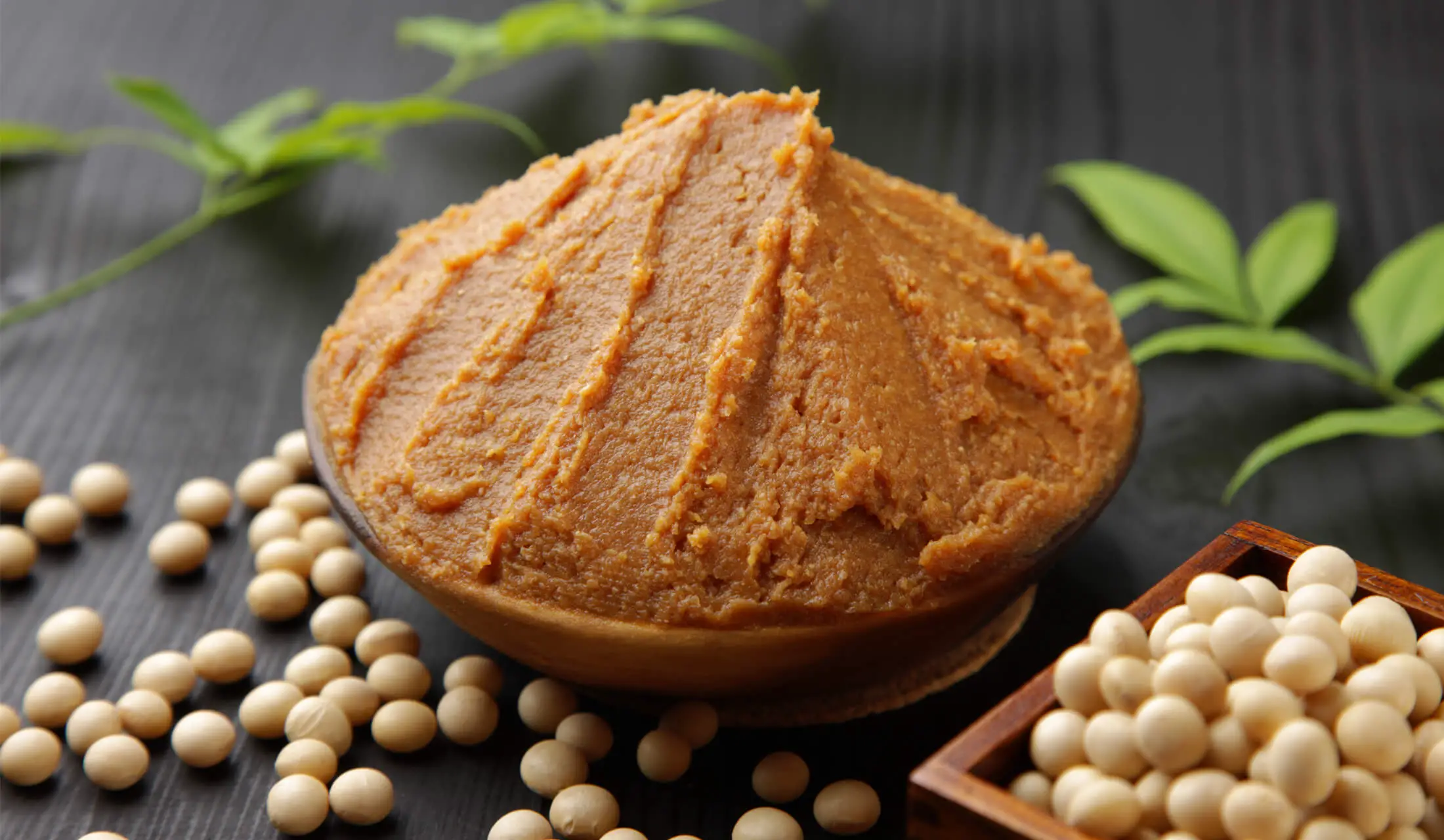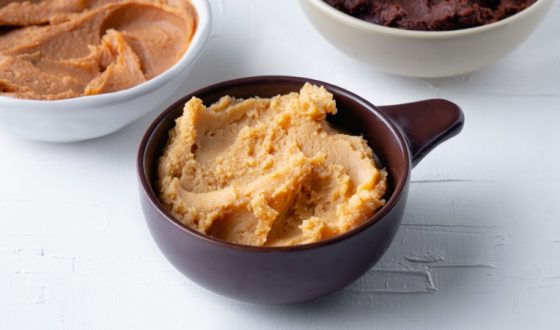What does miso taste like? – Quick glance at the soul of Japanese cuisine
Japanese cuisine, with long history and rich culture, is undoubtedly one of the most popular cuisines in the world. Though Japanese people tend to maintain the fresh flavor of food by limiting added seasoning, many traditional Japanese dishes cannot shine without Miso – a key ingredient in Japanese cooking. So what is Miso? What is Miso made of? What does Miso taste like? These questions are probably popping up in your mind right now. Let’s discover everything you need to know about Miso in today’s blog.
What does miso taste like?
1. What Is Miso?
Miso, originally came from China, is a Japanese traditional seasoning. Basically, it is made by fermenting soybeans, rice or barley with salt and Koji. The flavor and texture of Miso will depend greatly on the fermentation time. This can range from several weeks to one year. After being produced, Miso is packed and distributed to the market. The final product can be used in a very long time if it is preserved well in the refrigerator. Traditionally, Japanese people use Miso paste to enhance the taste of soup broths. However, nowadays, people also use Miso in many Western dishes like salad, braised chicken, etc. It is no secret that Miso has become an essential part of Japanese cooking and even considered the soul of Japanese cuisine.

It is no secret that Miso has become an essential part of Japanese cooking and even considered the soul of Japanse cuisine.
2. Varieties of Miso
There are many types of Miso available. Based on the grains that are used for fermentation, we have three kinds of Miso. They are Barley Miso, Rice Miso and Soybean Miso. However, Japanese people typically categorize Miso based on color and taste. In general, there are 3 main types of Miso which are White Miso, Red Miso and Mixed Miso.
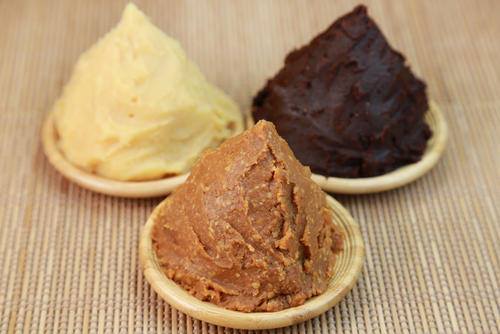
There are 3 main types of Miso which are White Miso, Red Miso and Mixed Miso.
- White Miso (Shiromiso) has yellow color and soft texture. It is made by fermenting white rice in about 1 month.
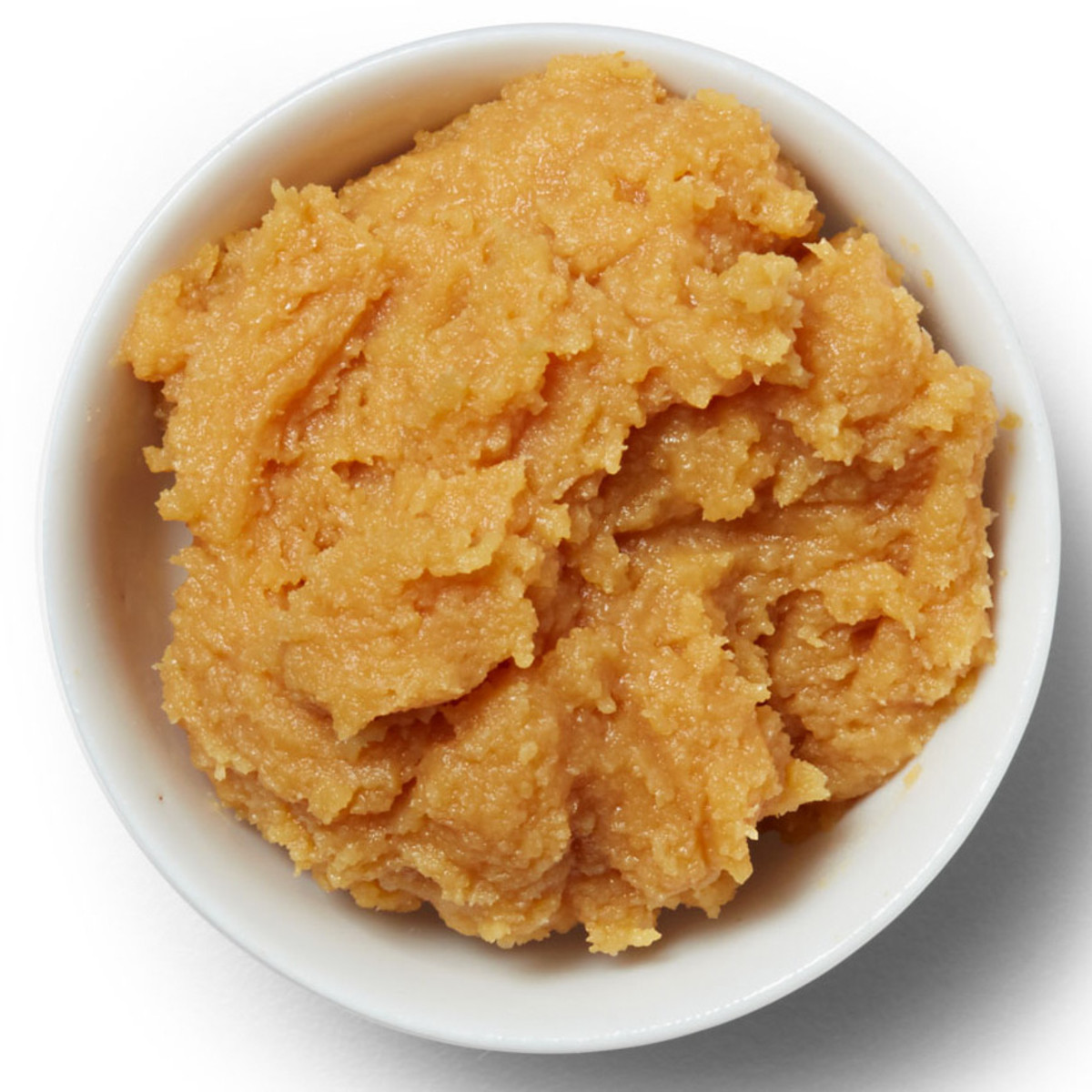
White Miso has yellow color and soft texture.
- Red Miso (Akamiso) has dark red color and firm texture. It has a significantly longer fermentation time which ranges from 2 to 3 years in comparison with White Miso.
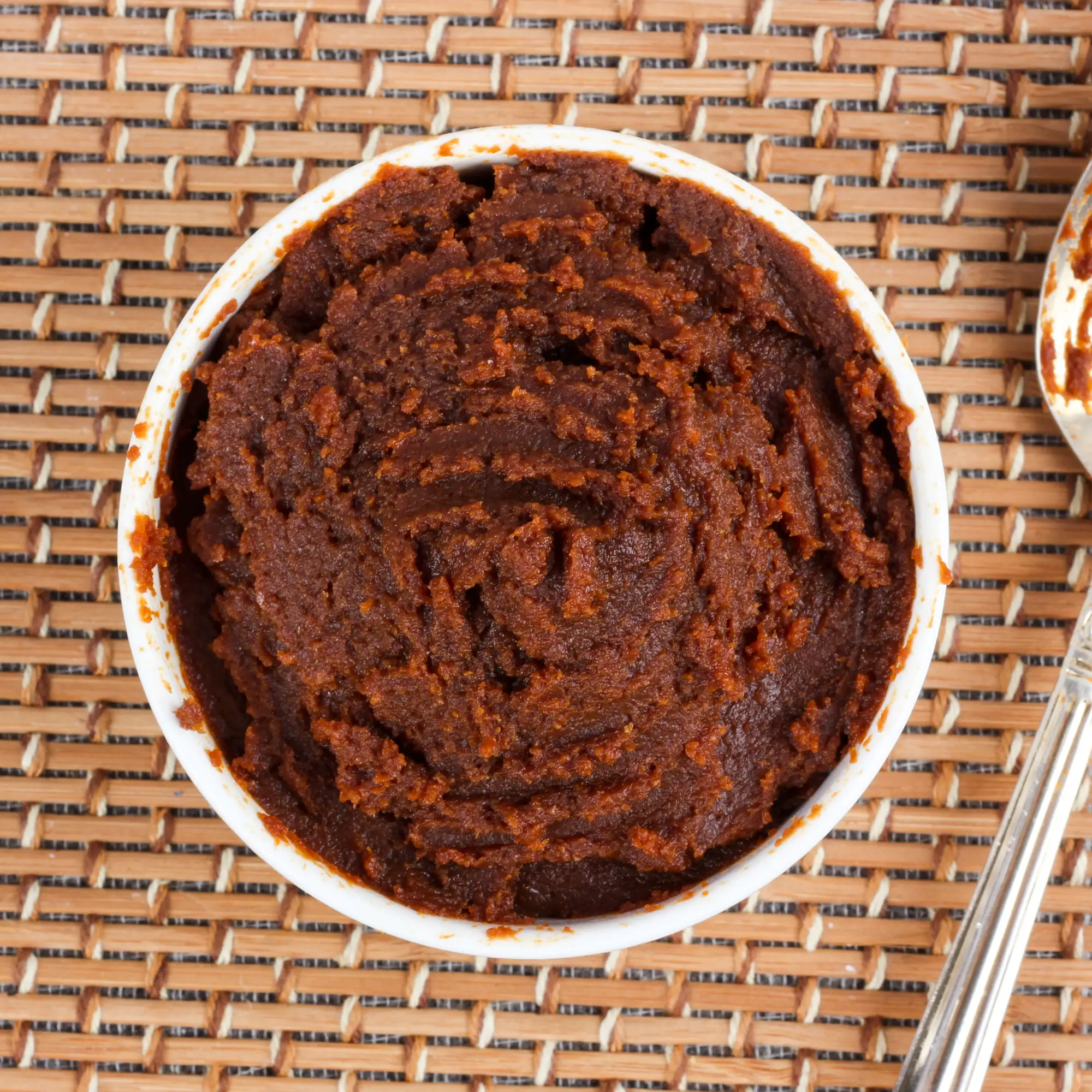
Red Miso has dark color
- Mixed Miso (Awasemiso) is basically made by mixing White Miso and Red Miso together. Therefore, it has dark brown colour. The fermentation process lasts from 1 year to 1.5 years.
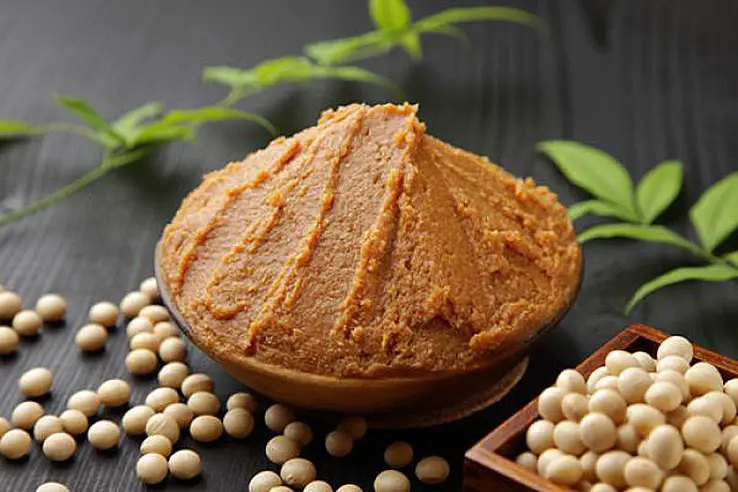
Mixed Miso has dark brown color
More Misos
Apart from the most familiar sorts namely white, red and brown, there is still an entire world of miso awaiting you to discover. Here comes a few ones to note down:
- Mugi: The miso made from barley which can either be light and mild or dark and intense. The sweetness and spicy flavour make it an interesting topping for soups or stews.
- Hatcho: Purely made from soybeans with no other cultivated cereals. The mixture is deep in color, strongly salted and has a distinctive aroma. The best way to enjoy hatcho is to combine it with bland, toasty ingredients like rice and sesame.
- Inaka: Main ingredients of inaka are soybeans and grains. The fact that grains are not crushed finely makes the combination a chunky texture. Inaka could be dark or light and it is absolutely a perfect addition for fish dishes.
Read more:
- A brief note about Japanese Beer Brands
- What Is A Bento Box? Interesting Japanese Tradition At A Glance
3. What does Miso paste taste like?
Each Miso product has a different taste and texture. It is really important to know clearly the characteristic of each Miso product. You surely do not want to mess up a sophisticated Japanese dish by using an inappropriate kind of Miso!
Though Miso is not meant to be eaten alone, you still can try it raw to feel miso flavor at best. At first, you may think that its taste is weird and a bit harsh. But once Miso is blended wisely into food, it can bring the original dish to a whole new level!
Basically, Miso has a salty taste and a typical tangy smell like that of any fermented product. Generally, its texture is smooth, more or less like that of a red bean paste. The flavor of Miso varies along with its color. The brighter color Miso has, the lighter and the sweeter it tastes.
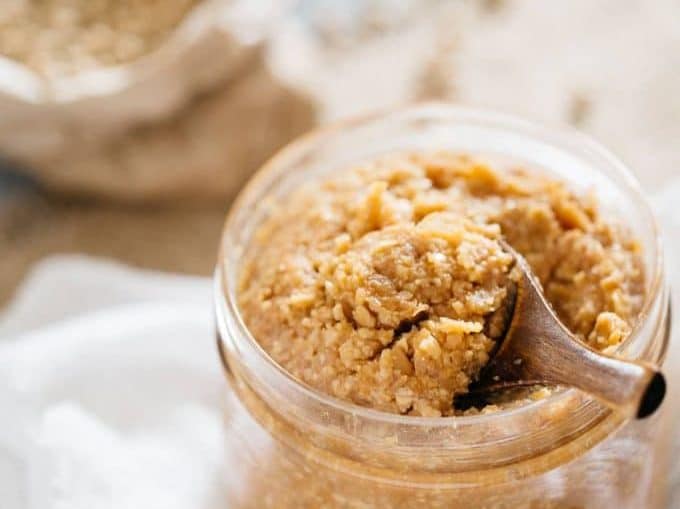
The brighter color Miso has, the lighter and the sweeter it tastes.
3.1. White Miso:
White Miso has a mild and sweet flavor. You can find a perfect balance of sweetness and saltiness in this type of Miso. Given that, it is also the most versatile Miso for home cooking. It can go well with tart, acidic flavors and slightly bitter flavors. With a gentle nature, White miso is easy to combine with a variety of ingredients so many Western chefs love it. They often use it in mashed vegetables to add Asian flavor. Using Miso to make a thick sauce to dip vegetables is also delicious.

What does white miso taste like?
3.2. Red Miso
Red Miso has the strongest flavor among all types of Miso. As in fermentation process, people put more salt which allows for longer fermentation times, Red Miso has an intensively saltiness which is very suitable for stews that have a lot of meat and vegetables. You can mix this miso in water or dashi to stew meat. It also fits well in noodles, as it produces rich flavor without the use of additional seasoning.
Besides, red miso perfectly matches with red meats such as beef, sheep. It is not recommended to use red miso with fish, regardless it is stews or hotpot. You should use beef or chicken instead. If you want to eat fish hotpot or miso stew fish, use white miso instead.

Steak with Red Miso
3.3. Awasemiso
As Awasemiso is blended from White Miso and Red Miso, it has a medium flavor. Awasemiso has a moderate amount of salt, not too much, not too little so it is suitable to ferment other food. Many delicious Japanese pickled vegetables are fermented in miso. Two famous Japanese dishes which also use Awasemiso are fermented garlic and fermented egg yolks.
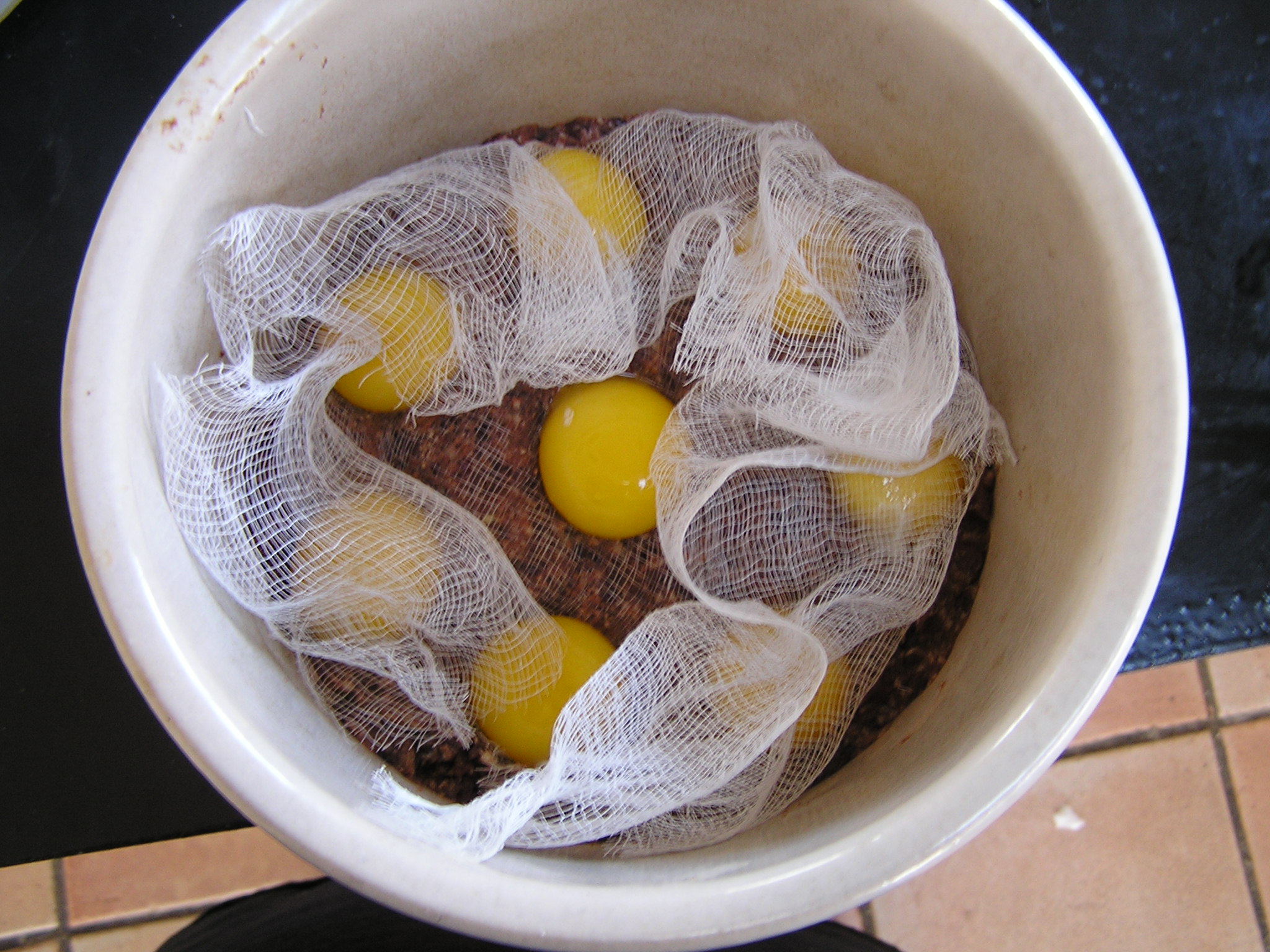
Fermented yolk egg with Awasemiso
If you prefer stronger taste, you can use Awasemiso for Japanese dishes that normally use White miso.
Click the link below for more information:
4. What does miso go with?
The taste is chunky and strong – a little goes a long way for those who try miso for the first time. It pairs well with heartier dishes and meaty, sturdy vegetables like eggplant and asparagus. Also, miso can be whisked into dressing, made into soup, drizzled on kale, blended into butter, and even incorporated into caramel sauce – the options are endless.
Here we suggest some delicious ideas to enjoy miso paste:
- Salad dressings.
- Onions for burgers.
- Main course soup.
- In marinades.
- As a seasoning alternative to salt or soy sauce.
- In a sauce to serve with pan fried meat or fish.
- In stir frys.
What does miso soup taste like?
1. What is miso soup
Along with miso paste, miso soup has been around for centuries in Japan. It is uncertain where exactly this dainty dish took its source from but most people believe it derived somewhere between China and Japan and was later on delivered to Western countries by Buddhist monks.
Miso soup gets its name from its content of miso paste, the salty and flavorful Japanese condiment. Other base ingredients are dashi (a base stock) and various other additions, for example wakame seaweed, green onions, scallions, tofu cubes, pork/ fish balls, mochi cakes, cabbage and mushrooms. The broth could be katsuobushi dashi, bonito flakes or vegetables, depending on whether it is a non-vegan miso or not.
Homemade miso has more places to be more creative as there is a great number of interesting toppings you can add, namely bean sprouts, sriracha and green herbs like lemongrass or mint.
2. What does miso soup taste like
Almost every food lover agrees that miso soup is extremely savory, salty and earthy, with sweet and spicy flavors becoming more prevalent during cooking. Miso paste which is the key ingredient gives it a tangy flavor and white or brown rice vinegar brings in the perfect balance of sweet and sour. Still, the taste varies depending on what ingredients are used.
- Onion-taste: The green onions and scallions that are used for decoration will add some pungent odor to the soup
- Sea: You’ll definitely notice the briny, salty flavor which comes from seaweed while you’re eating it
- Fishy: It could sometimes be fishy in flavor if the stock contains bonito flakes or dashi.
- Nutty: Tofu makes the soup soft bite and mild nutty. What’s more, it works perfectly to enhance other strong notes.
3. What miso soup goes well with
Nowadays, it is common to serve miso soup as part of a complete meal. Besides, the soup can enjoyed as an ingredient in other dishes like:
- Chicken curry rice: Rice is an easy way to make miso soup more hearty. The sweet flavor of rice pairs with miso soup in an incredible way.
- Noodles: Miso Udon or Ramen is a comforting noodle soup and it is quite easy to make with chicken, fish cake, and noodles being put into a miso-flavored broth.
- Japanese grilled mackerel: The miso soup on top of the mackerel brings out the flavor in this dish and makes it a great addition to any Japanese meal you’re cooking.
Note: Normally, people do not include egg in miso soup. Japanese restaurants or other establishments will not serve that with miso soup except from special orders.
FAQs
1. Is miso soup vegan?
Many people have the question of whether miso soup fits a plant-based or vegan diet. While miso paste is generally considered vegan, the same may not hold true for miso soup. Actually, depending on the ingredients used to make miso soup, it may be vegan or vegetarian.
Miso soup made with kombu dashi, which is a stock derived from a type of seaweed, can suit a vegan diet. Whereas, miso soup with niboshi dashi potentially fits into a pescatarian diet only. Still, some American or European versions of miso soup may contain other animal-derived ingredients such as shrimp, clams, or pork. As such, none of which are vegan.
2. Does miso taste fishy?
Yes. Miso may taste fishy if it consists of bonito flakes or tuna. Some miso soups may have a fishier taste than others.
3. Does miso go bad?
Miso is a type of “preservative food”. Its quality can remain relatively consistent for a long time thanks to the high level of salt. Though, it should be kept in low temperature and not be used if the food has been opened for over one year.
4. Can you eat miso paste raw?
Miso can be eaten fresh, however, it needs to be sealed and kept in the refrigerator for preservation. Also remember that cooking affects the original flavor as well as nutritional content of the food. So when used in miso soup, most chefs don’t let the miso boil completely.
5. Where to find Miso paste?
Miso is an indispensable part of Japanese food so it is extremely easy to find it. Miso is available in any convenient store or supermarket across Japan. On the plastic tubs or jar, you may find it called “miso paste” or “soybean paste.” Just remember to look at the name and ingredients printed on the cover carefully to select correctly the type of Miso that you are looking for.
6. Is Miso soup healthy?
Miso soup has gained a reputation for its healthy benefits and become a food trend for a long time. Miso soup is rich in protein, vitamins, minerals, and relief from fatigue. Iodine and vitamin A found in seaweed are essential factors for the immune system and depleting increased stress levels. Soybean is also a good source of protein which helps with satiety without adding lots of calories to your meal. Also, there are high levels of calcium contained in miso ingredients that help improve bone mineral density and promote weight loss. As a traditional part of many Japanese diets, the food proves to be helpful in curing illnesses like colds and cancers.
Conclusion
Hopefully, after reading this blog, you have gained an insight into Miso – the door to Japanese cuisine. Now that you have the answers for the questions like “What is Miso?”, “How does Miso taste like?” and “Where to buy Miso?“, do not hesitate to make a Japanese dish using Miso for your family. And if you go to visit Japan one day, you can also consider buying Miso as gift for your families and friends. Please feel free to share your thoughts in the comment section below.

